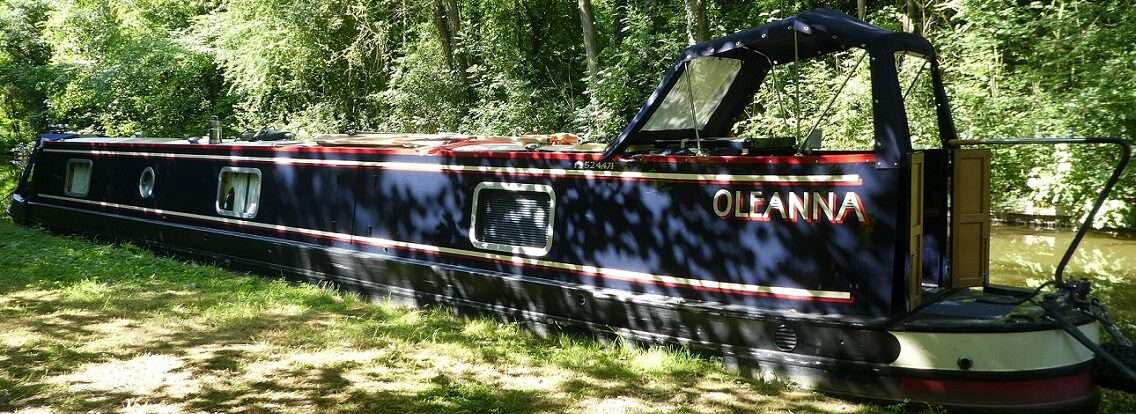Welford to Welford Wharf to above Welford Lock
It rained just about all night, drips dropping from the overhead trees, as it was fairly constant it wasn’t annoying, however the tree cover wasn’t helping with our solar, we’d need to move.

Boats were on the move at 8am, a fairly constant stream of them from the end of the arm, most importantly the two boats that had been right at the very end in the wharf moorings and ideal place to top up with water. Breakfast first, a cooked one too. Mick must be a little out of practice as the sausages were a little miss timed, very tasty though.
Tilly had been given an hour or so shore leave and once she was back on board for her mid morning snooze we closed the doors and made ready to move.

Mick had made a comment that a picnic bench had appeared at the stern of the boat behind us. He was right. Just where had it come from? It seemed like the boat behind had visitors, possibly grandchildren so sitting out would give them more space at meal times, the towpath had been quite busy last night. But just where had it come from? I wondered whether it could be broken down into sections and stored under their solar panels.

On we pootled up to the end where the Wharf moorings were both empty, pulled in port side accessible for the yellow water tank. At the back of the wharf stand the old limekilns, in the 1800’s narrowboats would transport limestone to the kilns where it would be burnt and turned into lime, fertilizer for the fields. The kilns operated from the 1820s to 1930s.
Time to see if my sample of printing had arrived, we walked up the main street to the Post Office and shop. The lady checked, nothing for me yet, the Postman had already been once today, he might be back later but there was no normal time when deliveries were made. We picked up a few bits for lunch and walked back.


Back in 2017 when we had a few days here Postman Pat and Jess were different. The wooden sculpture gradually rotted away. In 2019 funds were raised for it’s replacement, made from hardwood with a concrete base this version should last longer. I think the old version was just a touch more friendly though waving at passing vehicles.

With time to kill we paused at the bridge over the River Avon. Welford was once a ford across the Avon. We picked up sticks and dropped them in, Mick was convinced mine would be the first through. We waited and waited, the flow almost none existent, finally one showed and we carried on back to the boat, not sure who had won at Pooh Sticks.
The water tank was set to fill, washing machine put to work, yellow water pumped out for disposal at the elsan. I made use of the hot water and had a shower, a second load of washing was set going. The thyme plant was repotted, something I’ve been meaning to do all year, just a shame I didn’t have quite enough compost to do it fully. The Rosemary will have to wait for fresh supplies. Mick sorted out the bow fender, checking the weak links whilst he had easy access.

Just as we were ready to push back a boat came to wind, we waited patiently for them to finish and moor up before we did the same.
Passing our mooring of the last two nights we noticed that the picnic bench was now gone a dry patch on the towpath where it had stood. No sign of it in pieces under the solar panels. Just where was it? We’d checked to see if one was missing at the pub, but there was no obvious sign. Mystery bench!

We continued a short distance further hoping for less tree coverage to assist our solar panels. Not as much sky as we thought we’d get, but a different outside for Tilly, also a prettier view between the trees opposite. We’ll wait here for my sample.

0 locks, 0.6 miles, 2 journeys, 1 wind, 1 picnic bench, 0 parcel, 4 gluten free ciabatta roles, 2 outsides, 2 loads washing, 2nd generation Pat and Jess, 0 news on budget, 0 phone signal, 1 Mrs Tilly stamp of approval.



























































































































